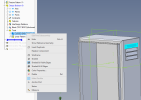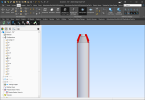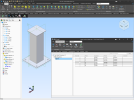multicaduser
Member
This may take a little explaining so apologies first. Real world projects are best for learning so I've been using AD Expert to design dust collection adapters for my wood shop stationary equipment. Now I want to move onto the portable and hand held tools and want to develop a bayonet adapter for a single connection point for multiple tools. I'm very comfortable with configurations and am thinking of using them for the adapting side, having the bayonet geometry fir the base feature with the adaptive side for each tool defined by each configuration.
The up side is that there is one place to adjust when making changes for fit and function on the bayonet side along with having a single file to add new adaptive configurations. One down side is one file contains everything and if it gets broken all can be lost. The soon to be released pdm system may help with those fears and I'm very diligent about versioning when making large changes, but all the eggs in one basket is not just a warning.
Does this seem like a reasonable path and is there another option which might serve as well? I've learned a lot from long time users on this forum and hope to get enough experience to be more than just a lurker.
Thanks in advance for any replies.
The up side is that there is one place to adjust when making changes for fit and function on the bayonet side along with having a single file to add new adaptive configurations. One down side is one file contains everything and if it gets broken all can be lost. The soon to be released pdm system may help with those fears and I'm very diligent about versioning when making large changes, but all the eggs in one basket is not just a warning.
Does this seem like a reasonable path and is there another option which might serve as well? I've learned a lot from long time users on this forum and hope to get enough experience to be more than just a lurker.
Thanks in advance for any replies.





